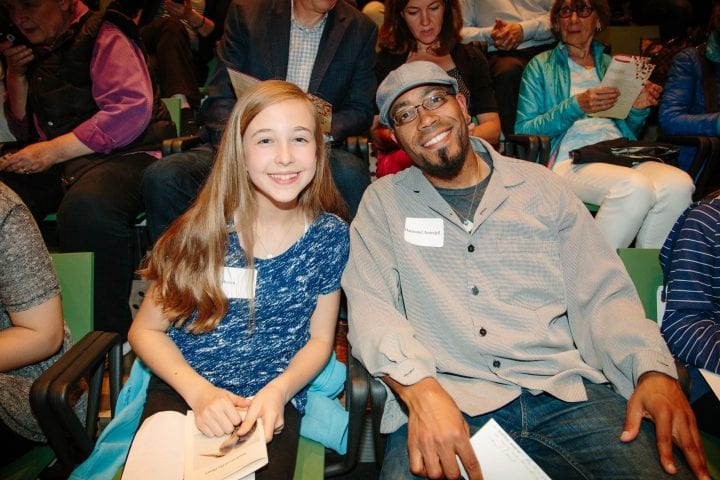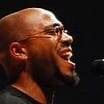
WITS Voices: “Black Lives Matter is…”
December 20, 2016
By Daemond Arrindell, WITS Writer-in-Residence
the skin stays silent
it is our blind eyes that give them voices
or take them away
On Wednesday, October 19th, Seattle Public Schools put their foot out there in a pretty public way. Faculty, administrators and parents at numerous schools throughout the greater Seattle area showed their support of the Black Lives Matter movement, and of their Black students, by wearing “Black Lives Matter” t-shirts.
In progressive, liberal Seattle, a city that prides itself on making political statements but then doesn’t always back it up with policy or action, that celebrates its “diversity” while quickly and consistently gentrifying that population, this is a positive step—but important to recognize it is just one step. Folks identifying themselves as allies can step in and out of a t-shirt at will or convenience, but for those who identify as Black, the statement Black Lives Matter is made out of necessity because our existence in our skin is 24/7 at risk.
Just the day before, the three classes of sixth graders I was working with completed an anaphora lesson (also known as list poems), where lines either begin or end with the same phrasings. These poems enlist a great deal of repetition and can take on a rhythmic or musical tone. The hook or chorus of most songs works in this same fashion. Due to their familiarity with this structure, I think that even though some of the students express a lack of confidence in their creativity or writing skills, all who participate go on to create something meaningful.
I borrowed a learning plan from poet, activist, and fellow WITS writer Nikkita Oliver for the day’s focus, making some needed tweaks for the age group. The 55 minutes consisted of a free-write describing Black Lives Matter using the five senses; a brief history of the movement and its purpose; and listening to “Hell You Talmbout,” a protest song penned by recording artist Janelle Monae, which repeats the names of unarmed black people who have been killed by police in recent years. The song is simplistic and haunting as it demands that we “say her/his name.” The reason behind it, the students determined: so we do not forget. And coming from an age group that forgets things all the time – homework, permission slips, chores – this reveal held tremendous weight.
The second video came courtesy of the New York Times and shared accounts of activists on how Twitter was a powerful tool following the death of Michael Brown at the hands of police in Ferguson, not just for community organizing, but for sharing narratives that were different from mainstream media, and for healing. The lesson concluded with list-making of places, colors, people and memories, and finally, the actual anaphora poem that used the opening line “Black Lives Matter is…”
Amidst all of this was a great deal of commentary from students—stories regarding older brothers and sisters and cousins who had been harassed by the police. One student recounted, through a hushed voice, the loss of a loved one to police violence – and questions. Some definitions needed to be clarified, too. Their idea of racism had been simplified to pointing out differences: when I had commented how a face turning red as a way to describe anger wouldn’t work for someone with skin like myself or A****** (who is a few shades darker than me) and the students called that “racist,” we had to have a mini-lesson on the matter.
But what I noticed the most of during the day and a half that we addressed these issues through poetry was empathy, kindness, and respect.
There were tears and eyes opening into shock and anger and there was silence too, but all of it felt absolutely appropriate for the tragedy that they were facing—the ugliness of our society and how we treat each other. In closing, I shared my viewpoints on bullying and allyship: a bully sees what makes you different and oppresses you because of it, while an ally recognizes the difference and stands up for you. The students had sat through a presentation on cyber-bullying two days prior, so the comparison seemed fitting. I asked them to look around the room and note how different they are and thus how much they can learn from one another. To the students who identified as white, I explained that society sees those differences as bad, and they have a power, a privilege to stand up and say otherwise.
In my opinion, it is important that young people are given opportunities to address the ways that this world operates, the good as well as the bad, so they can decide what they think and feel about it, and also make some decisions about what kind of world they want to live in. How the students handled all of this is a testament to how diversity has been addressed at this school and the community they continue to build.
Some individual lines from the students:
Black Lives Matter is the color red, red splattered upon black and grey, now dried and brown.
Black Lives Matter is fearing those who protect.
Black Lives Matter is right after dusk, but right before dawn.
Black Lives Matter is Macon, Georgia, in the middle of the night.
Black Lives Matter is my backyard.
Black Lives Matter is the spark, the bullets, the sirens.
Black Lives Matter is the violent cries of the innocent, now forever dreaming.
Black Lives Matter is my classmates, is my best friend, is me.
Black Lives Matter is my brother coming home after dark.
Black Lives Matter is a 12 year old kid playing with a BB gun turned into a disaster.
Black Lives Matter, no matter what.
 Daemond Arrindell is a poet, performer, and teaching artist. He is currently a faculty member of Freehold Theatre and is co-facilitating (for the 5th year) a poetry and theater residency at Monroe Correctional Complex for men, in addition to working as a Writer-In-Residence through the Writers in the Schools Program. In the fall of 2012, he taught Seattle University’s first course in Slam Poetry. He has performed in venues across the country and has been repeatedly commissioned by both Seattle and Bellevue Arts Museums.
Daemond Arrindell is a poet, performer, and teaching artist. He is currently a faculty member of Freehold Theatre and is co-facilitating (for the 5th year) a poetry and theater residency at Monroe Correctional Complex for men, in addition to working as a Writer-In-Residence through the Writers in the Schools Program. In the fall of 2012, he taught Seattle University’s first course in Slam Poetry. He has performed in venues across the country and has been repeatedly commissioned by both Seattle and Bellevue Arts Museums.